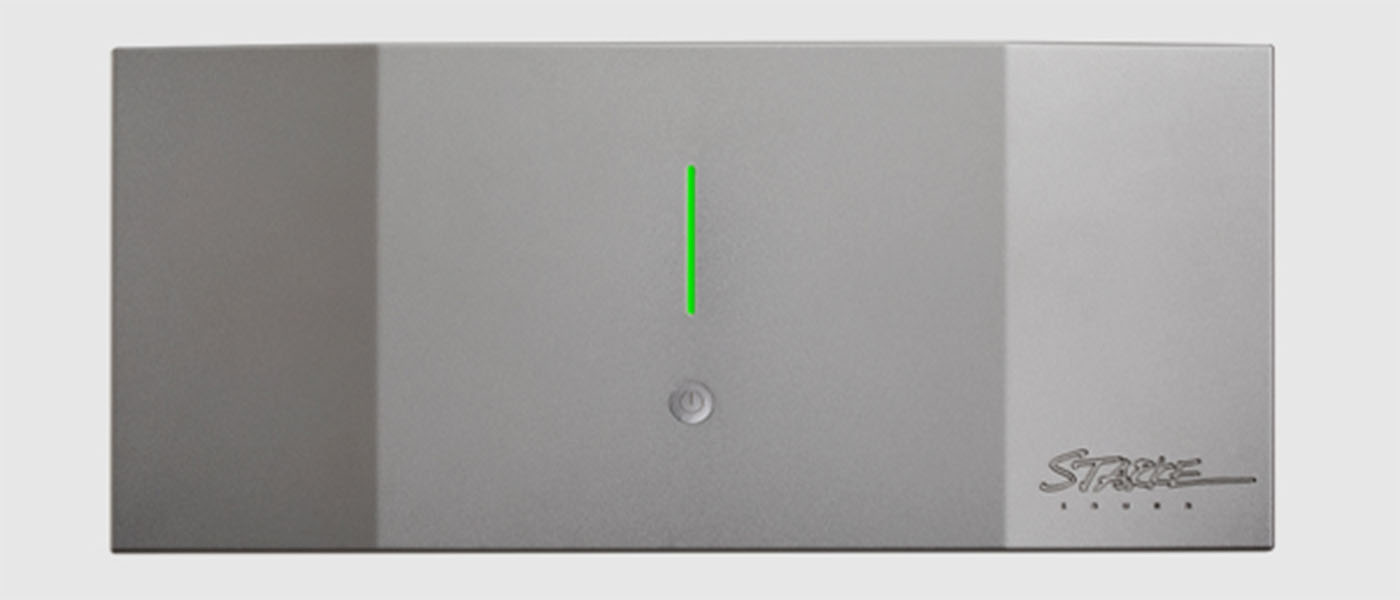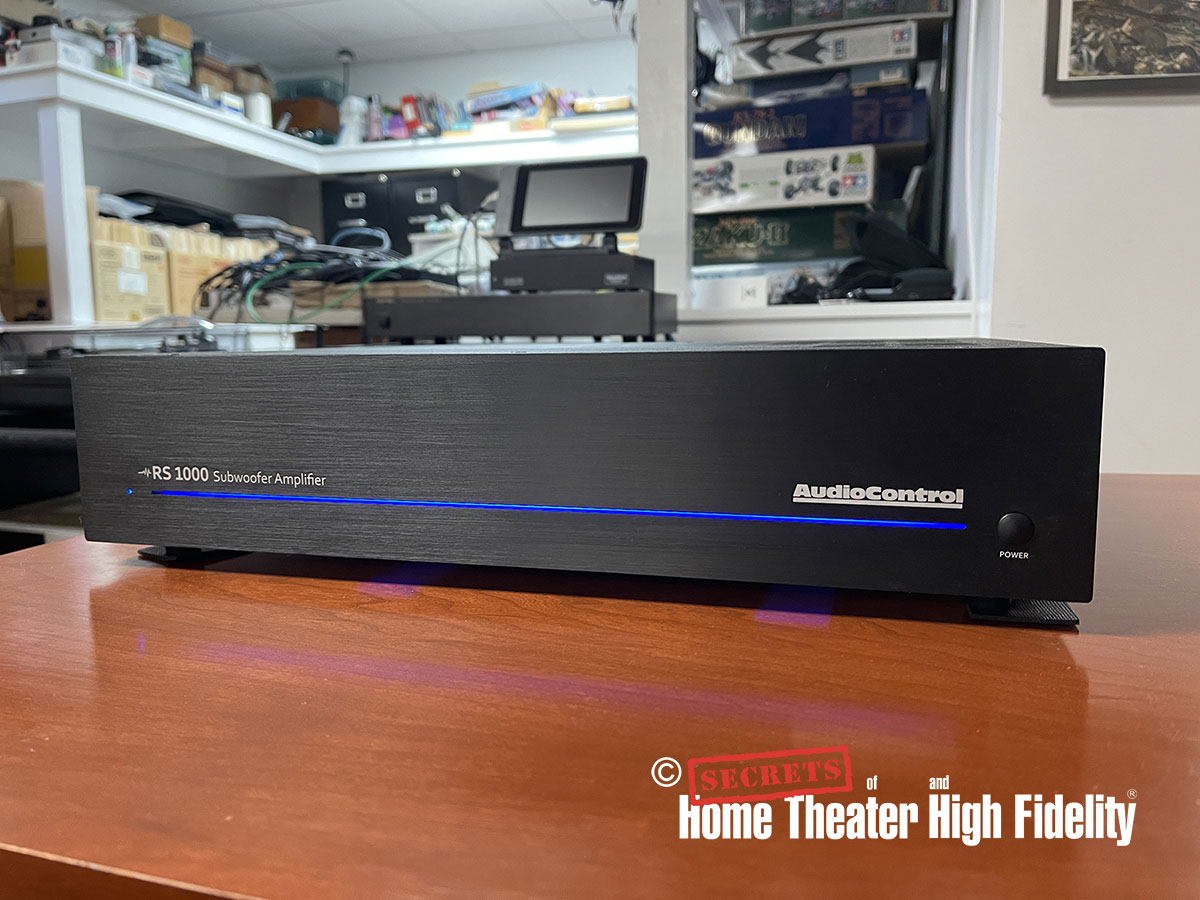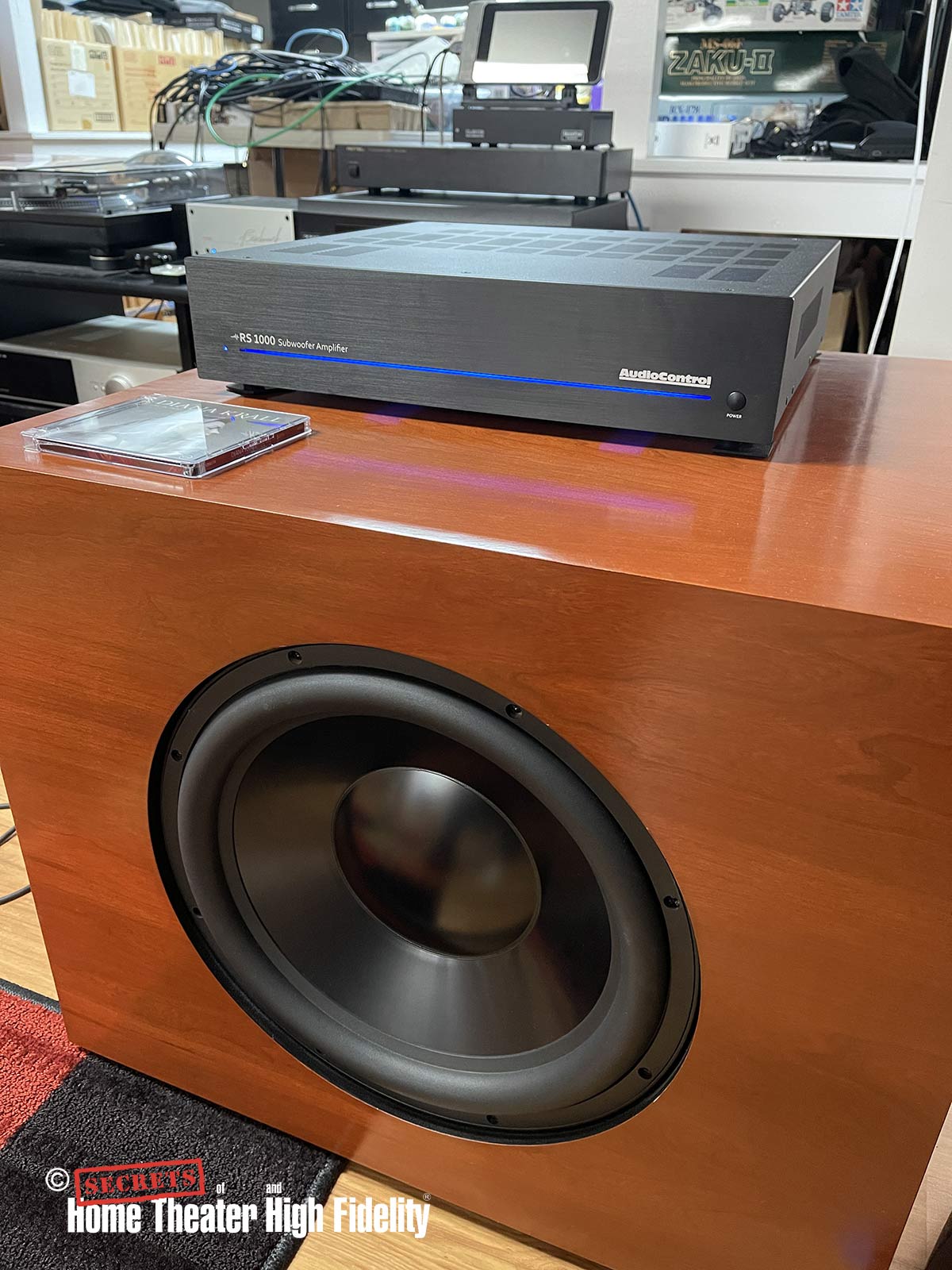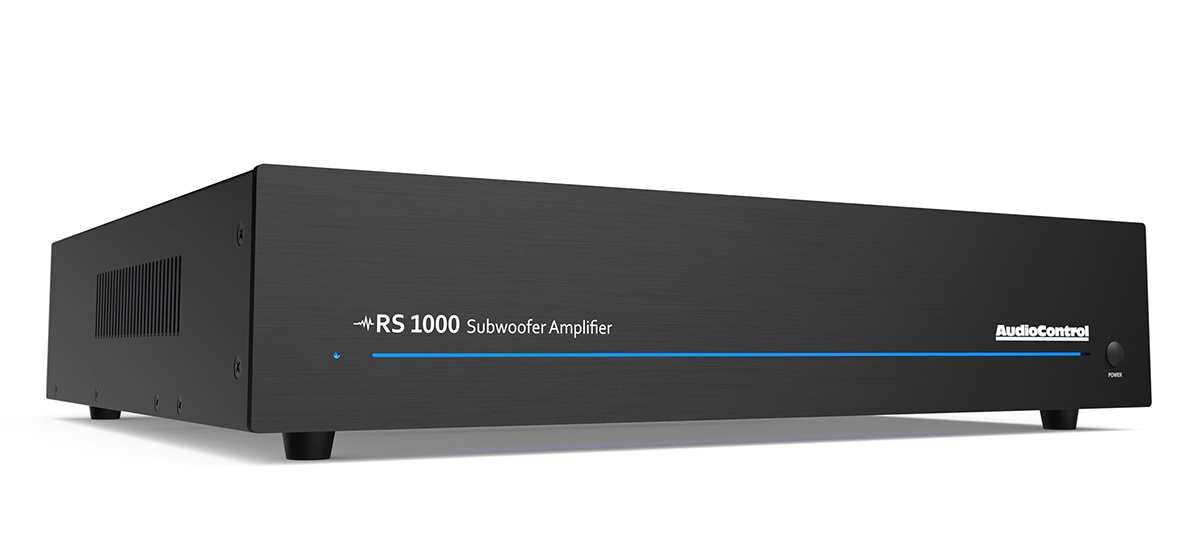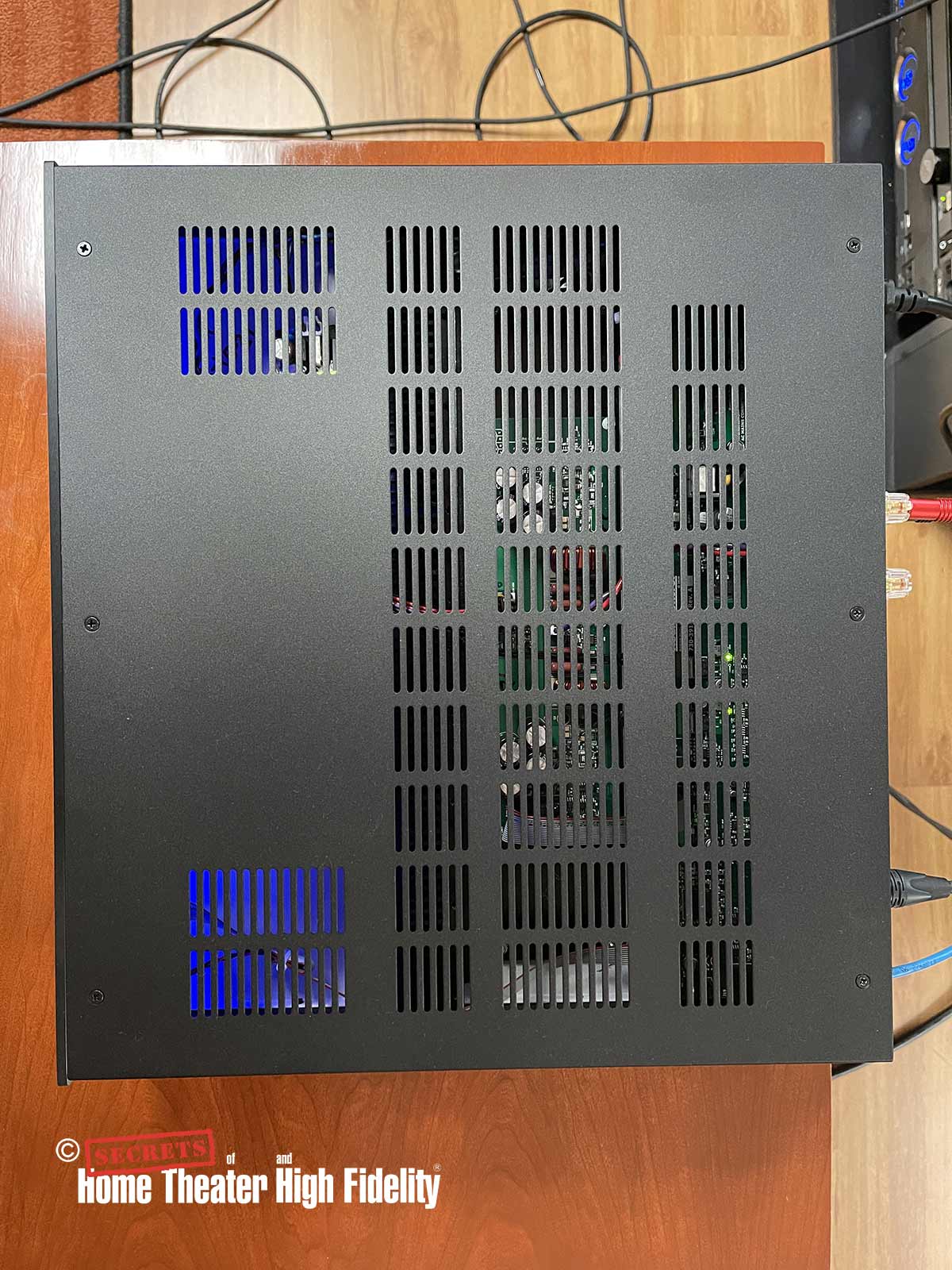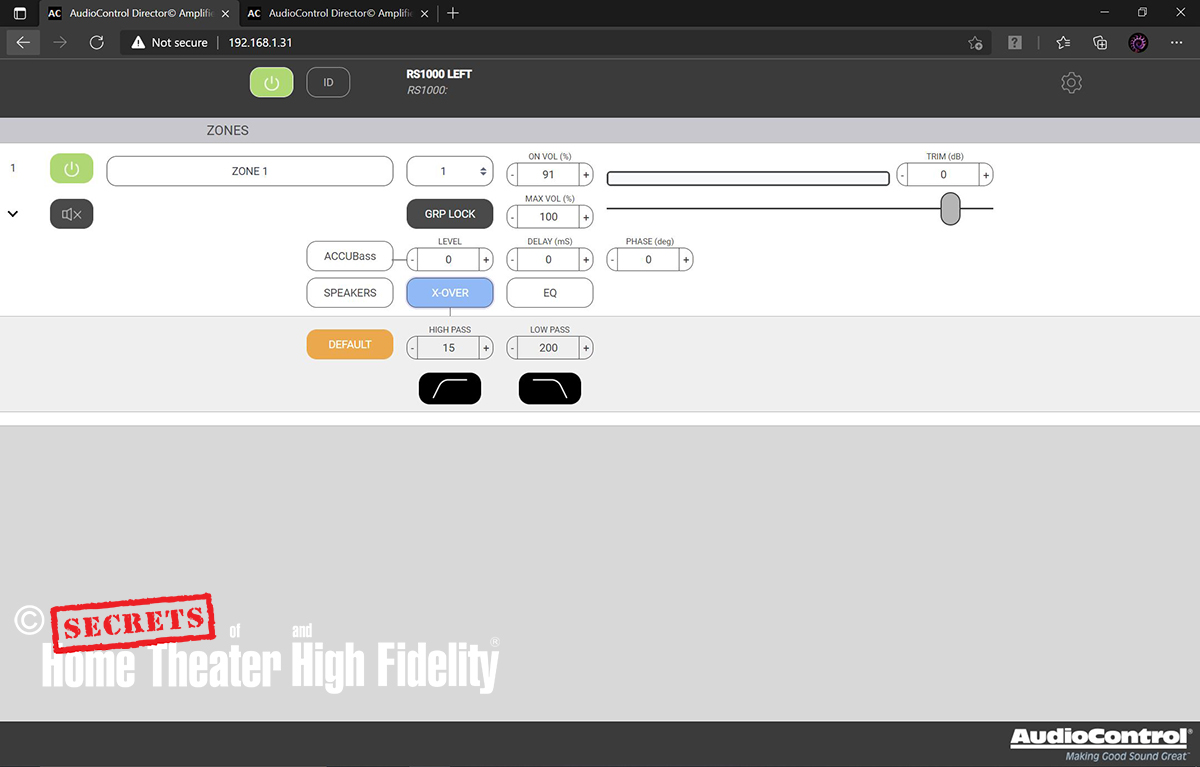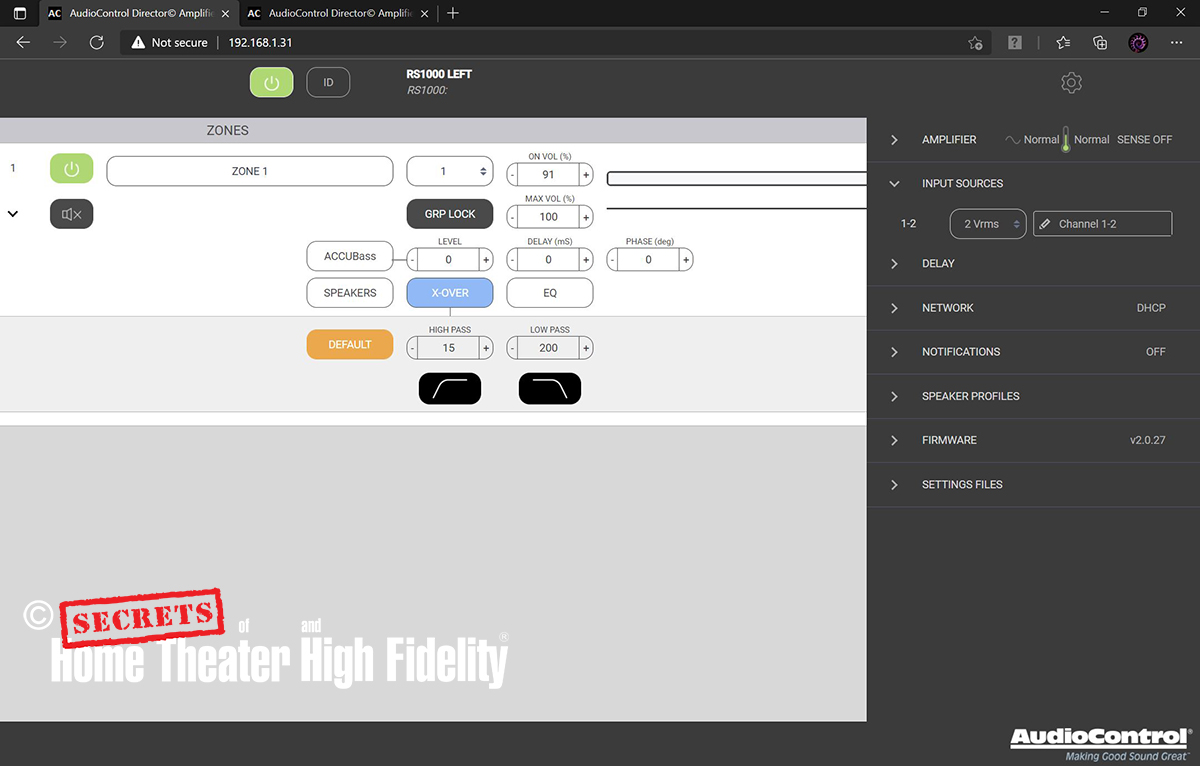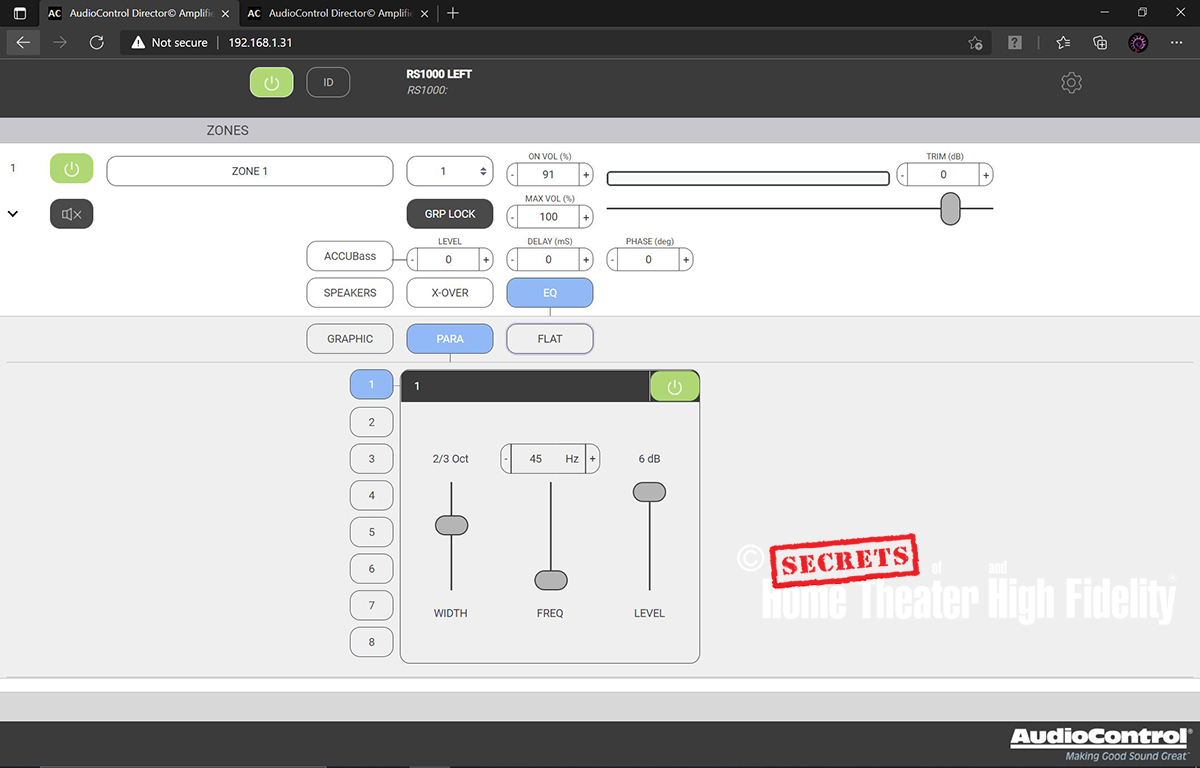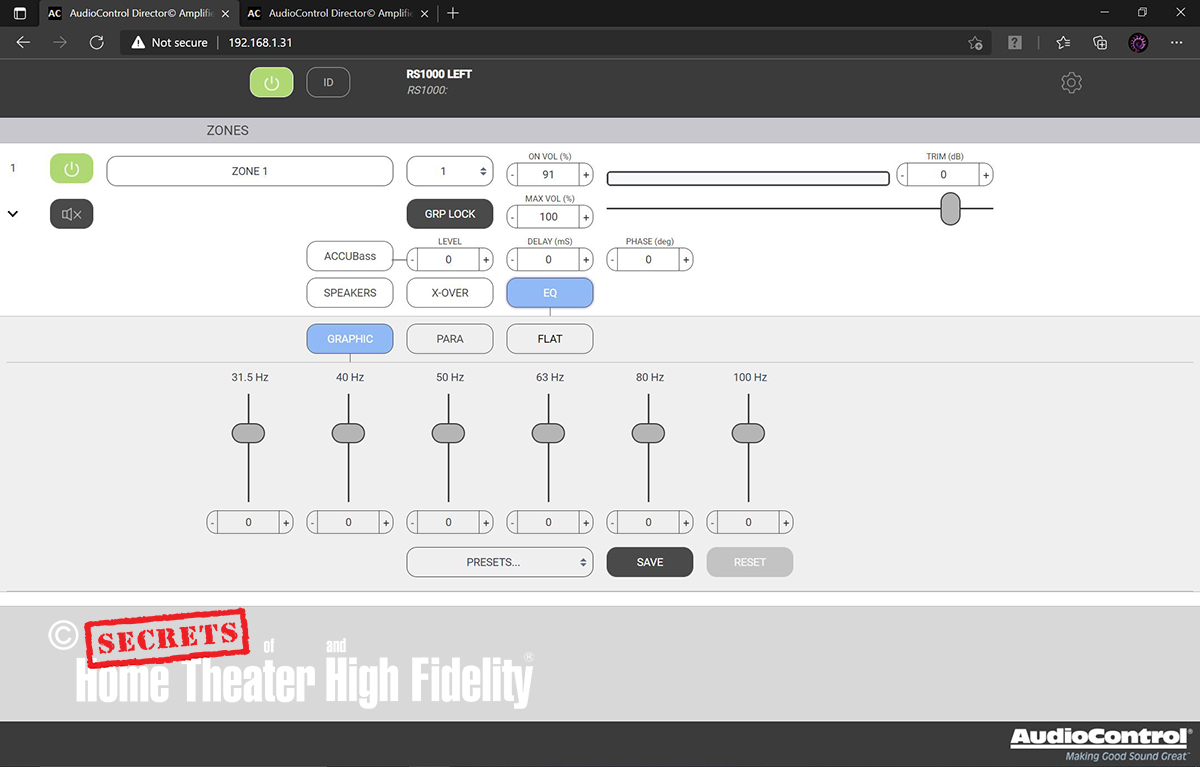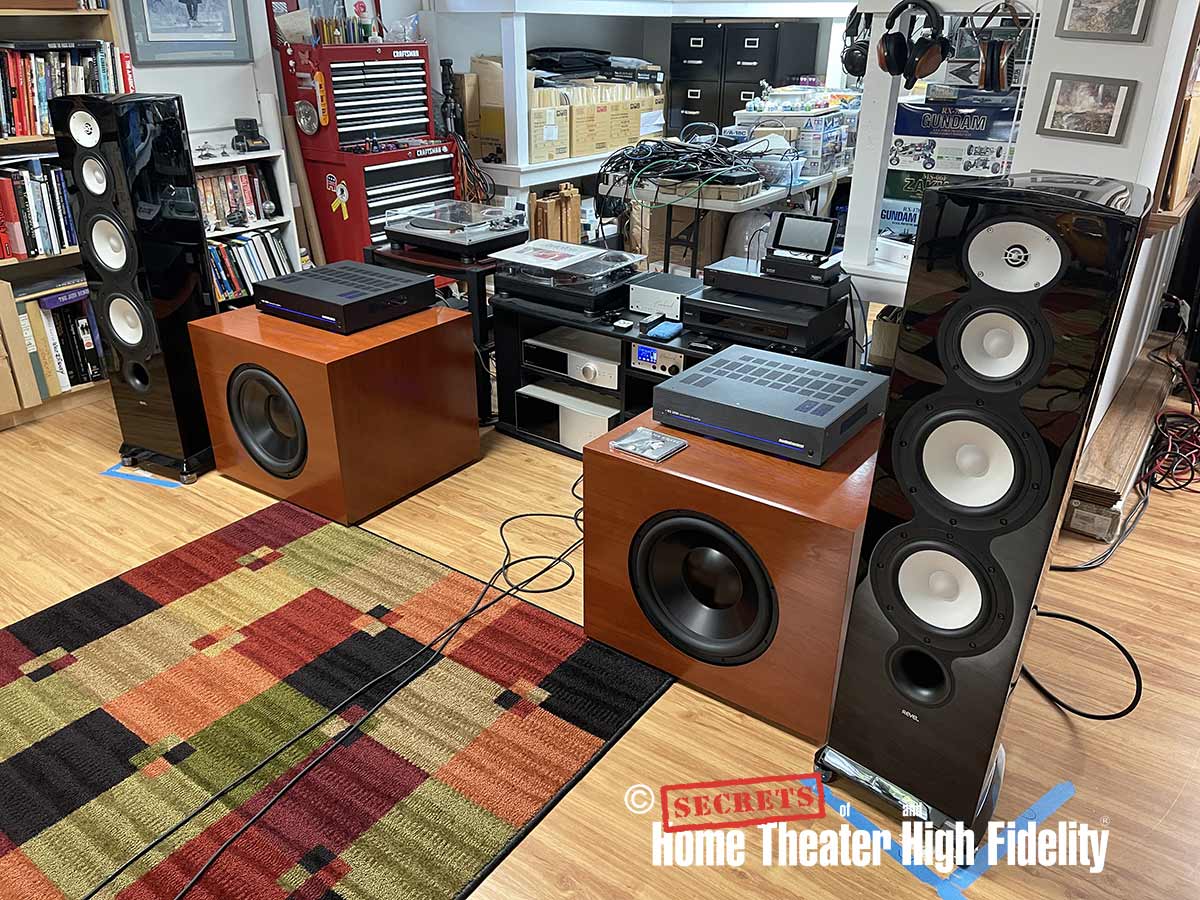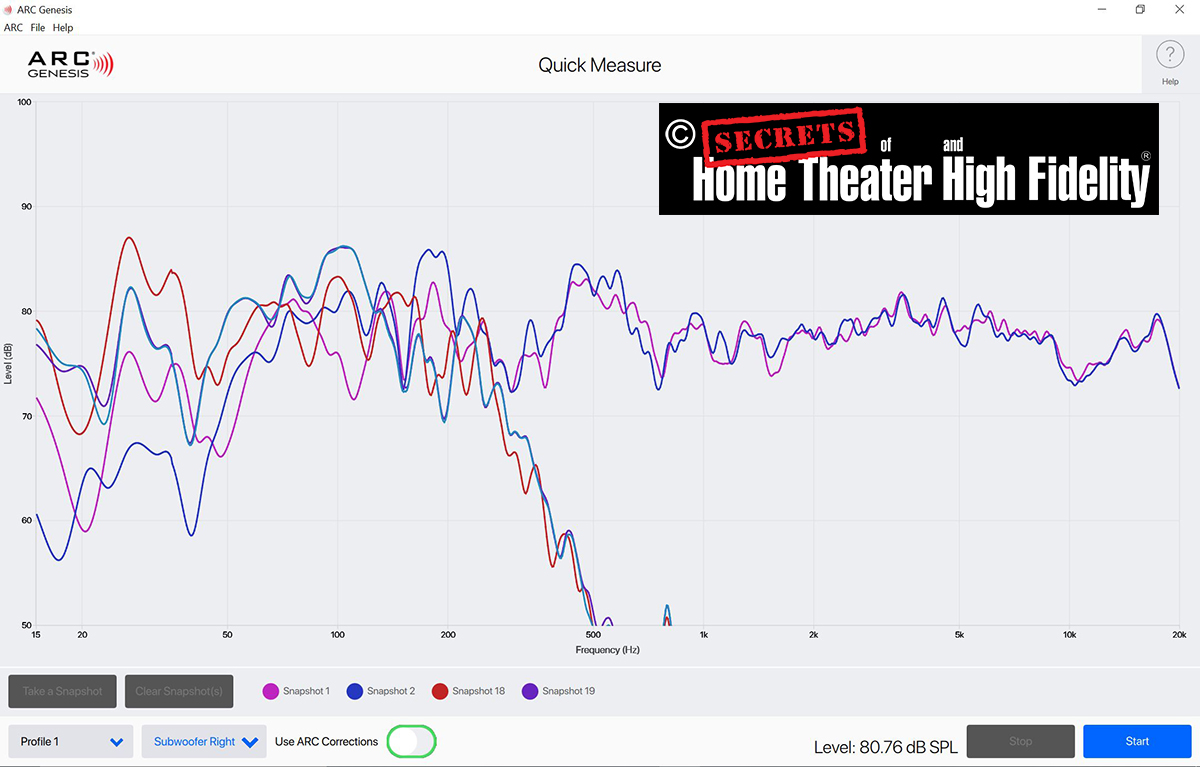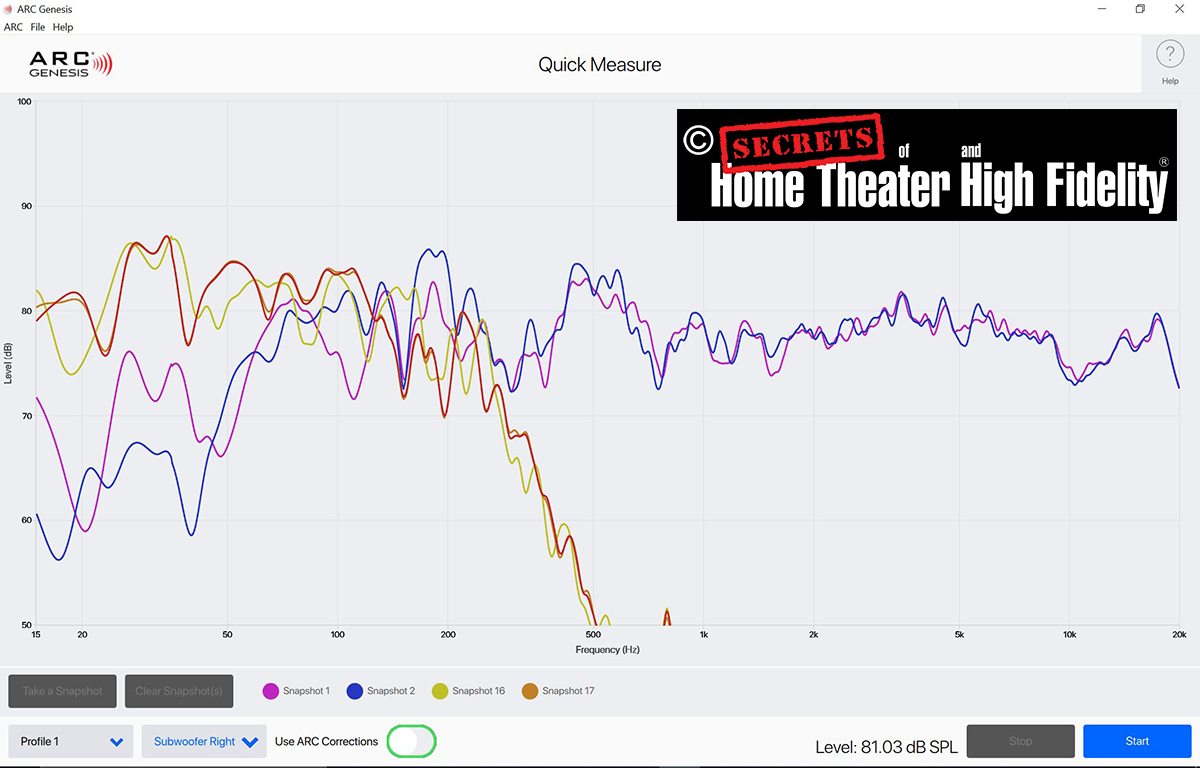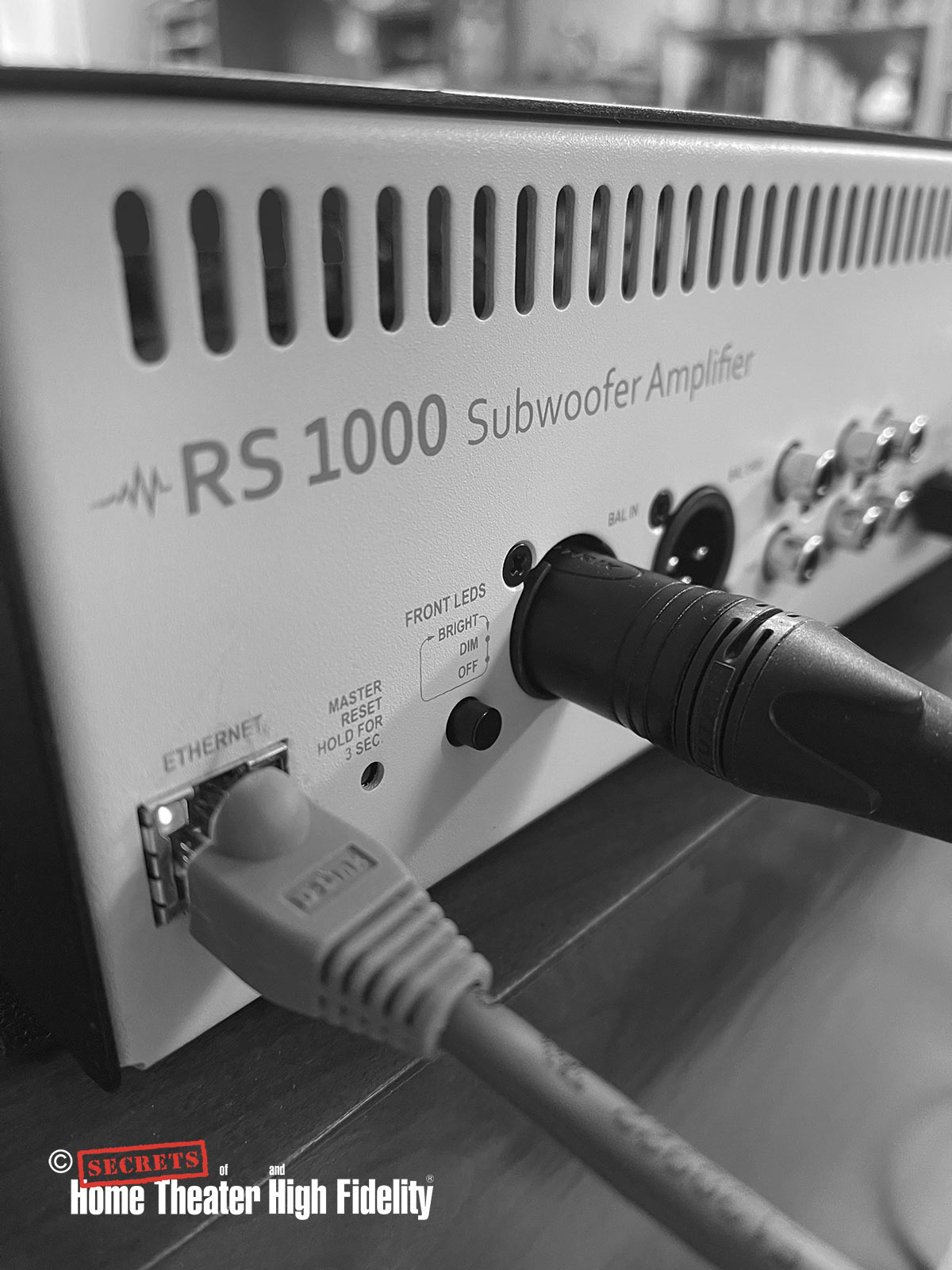While most subwoofers we see today are self-powered, there are some cases (be it DIY, a professional, or a multi-room installation) where passive subwoofers are used, and thus external amplification is required. Tucked into AudioControl’s product line are two dedicated subwoofer amplifier models, each with several features that are tailored to the application of copious quantities of bass. The RS1000 model featured in this review is the larger of the two models.
AudioControl RS1000 Mono Constant Power Subwoofer Amplifier
- 1000 watts (mono) available into 8, 4, and 2-ohm loads.
- Extensive onboard DSP includes 8 bands of PEQ and 6 bands of Graphic EQ.
- High-Pass and Low-Pass crossover filtering.
- Snazzy web-based Graphic User Interface (GUI) for setup and management.
- Custom Class-D design means lighter overall weight.
- Balanced and Unbalanced inputs.
Several years ago, I designed a pair of sealed DIY subwoofers, each built around the Dayton Audio RSS390HF-4 15" Reference HF Subwoofer Driver. Both enclosures have approximately 4.5 cubic feet of internal volume and I had hired a very talented carpenter friend to build and finish the sub boxes to match the cherry veneer of my Bamberg Series 2 monitor speakers. My goal was to have a 2.2 channel music system in my art studio. At the time I was using a Marchand XM44 external active crossover for bass management and I cycled through a few different external amps for subwoofer power, eventually settling on a pair of Dayton Audio SA1000 external mono subwoofer power amplifiers. Since then, I had sold the Marchand and have been using the excellent Anthem STR Preamplifier for its superior performance, flexibility, and the addition of ARC Room Correction.
The Dayton amplifiers have performed admirably over the years, but I was curious to see if there was anything similar out there that was more flexible, had balanced inputs, and possibly performed better. While power has been sufficient, the Dayton amps also have all analog filtering and PEQ resources, and let’s just say that their accuracy, predictability, and repeatability are somewhat “variable” to put it nicely. I had remembered reading about AudioControl releasing a pair of dedicated subwoofer amplifiers recently and I also remembered visiting their booth and talking with the reps at the last CEDIA that I had attended. I had been impressed with their technical knowledge and product array at the show, so after a quick email inquiry and a short discussion, I found a pair of RS1000 subwoofer amplifiers waiting for me at my doorstep and ready to be put to task.
Design:
Class-D Monoblock Power Amplifier.
Output Power:
1000 watts @ 8, 4, and 2 ohms.
Frequency Response:
20 Hz – 350 Hz (+/- 1 dB).
THD+N:
0.1% (500 watts @ 8 ohms, 20 Hz – 350 Hz).
Maximum Input Voltage:
4 VRMS (Balanced and Unbalanced).
Input Impedance:
15 kilo ohms.
SNR:
> 95 dB (A-weighted, ref full output).
Damping Factor:
> 350.
Analog Input Sensitivity:
1 VRMS for Full Output.
Minimum Speaker Load:
2 ohms.
Inputs:
1 pair RCA (Stereo), 1 single RCA LFE, 1 XLR
Outputs:
1 pair RCA (Stereo), 1 single RCA LFE, 1 XLR, 2 Pair Speaker Binding Posts.
Dimensions (H x W x D):
3.5” x 15.75” x 15.75”
Weight:
17 lbs.
Warranty:
5 Years Parts and Labor.
MSRP:
$1890.00
TITLESPEC:
DESCRIPTION
Website:
Company:
SECRETS Tags:
audiocontrol, power amp, mono, subwoofer, class d, amplifier review 2021
Visually, the AudioControl RS 1000 shares the design language found in pretty much the entire AudioControl product line. The dark grey 2U-height chassis sports the familiar white text and a long blue light strip across the front face of the chassis, along with a power button and standby LED indicator.
The backside has a wealth of connections for I/O, control, and triggering. First, let’s start with the Ethernet port. To get any measure of serious use from the RS1000, a network connection, via wired LAN or a wireless network bridge, is a must. Next, there is a Master Reset switch and a front light brightness button, followed by an XLR input and an XLR loop output (to daisy-chain the input signal to another amp). Next, we find the unbalanced RCA LFE input and matching looped output followed by a pair of stereo RCA inputs and looped outputs as well. Next is a High Pass selector switch that is tied to the looped RCA stereo outputs. Engaging this switch will convert the stereo RCA jack’s output from full range to a filtered High-passed (24 dB per octave) stereo signal, according to the settings you presumably picked out in the control interface. Low Pass filtering to the subwoofer is also configurable separately through the control interface. This is a simple but useful feature for integrating speakers with a sub or subs without the need for an external crossover.
Note that the High Pass filter selector only works on the looped RCA outputs and not the XLR. I mentioned this to AudioControl saying how High Pass filtering on the XLR outputs might be useful, especially in a professional setting along with wishing there was more than one fixed HP and LP slope choice. They said that High Pass on the XLR output is something that they are investigating in a future revision to the amplifier. Also worth noting is that other High and Low pass filter slope options will be coming in a future firmware update. Next, there is a set of Speaker Level inputs (Phoenix connectors), used in a distributed audio system. There are two pairs of 5-way binding posts for the connection of up to two passive subwoofers (the total impedance of the connected speakers should not be less than 2 ohms). Continuing, we find a Ground Isolation switch to help with alleviating any pesky ground hum, followed by a 3-pin Master Trigger block. Note that the block is preset with a jumper in place that sets the amp to be powered on and off via Ethernet. To power it on and off via the front power switch, the jumper needs to be removed. Rounding out the backside controls we have a Trigger Status LED, a 12V Trigger jack, an IR in jack, the AC power input, the fuse access, and the Master Power switch.
The amplifier itself is a Class D implementation but according to AudioControl, it is a proprietary design of its own. The upshot of the design is that it claims to provide up to 1000 watts of power into either an 8, 4, or 2-ohm load. No photographs of the internals were provided, and I was politely asked not to open the amp to take pictures.
Secrets Sponsor
Detailed setup and control of the RS1000 amplifier is facilitated by a network GUI (Graphic User Interface) that is accessible through any internet browser. I used Microsoft Edge. Once the amplifier is connected to your home network, you simply need to find the IP address assigned to the amp from your router and enter that in your browser address bar. Since I had two amplifiers, I had two different IP addresses to enter, so I had separate tabs open to control each amp.
Once you are in the system, the GUI main page presents you with the main amplifier controls in a clean arrangement. These include, On Volume, Max Volume, Trim, Muting, Phase, Delay, Custom Speaker Profiles, AccuBASS (more on this in a minute), 8-Band PEQ, 6-Band Graphic EQ, and High and Low Pass filter settings. AccuBASS is billed as a unique EQ curve that is applied to subjectively restore bass impact in a subwoofer system. One can select the desired level to taste or defeat it altogether. Clicking on the gear-shaped settings icon at the top right opens a flyout menu of additional settings including temperature settings, input sensitivity, network settings, firmware updates, notifications, and speaker profiles. I updated the firmware on both amps once during the review period and it was a simple, straightforward process.
I connected each RS1000 amplifier to its own DIY subwoofer. The subs were both 4.5 cubic foot sealed enclosures with a single Dayton Audio RSS390HF-4 15" Reference HF Subwoofer Driver. I combined the subs with two different speaker and electronics pairings. One setup used the Anthem STR preamp and power amp along with my Bamberg Series 2 MTM monitors. The STR preamp handled the bass management and room correction in this case.
The other setup consisted of the Benchmark Media HPA4 preamplifier, DAC3 B, AHB2 power amplifier, and Revel F228Be loudspeakers. Here I ran the speakers full range while adding in the subs to take up where the speakers would naturally start rolling off.
In real terms, there is some logic and benefit to having a dedicated subwoofer amplifier not integrated into the sub’s enclosure. The subwoofer’s internal volume can be completely devoted to the driver’s performance along with allowing room for additional bracing improving structural rigidity. The amplifier no longer has space restrictions imposed on it and heat dissipation can be better managed.
I admit up front that my use case for these amps in this review may seem a little unconventional. The RS1000 is most certainly geared towards a custom HT installation, distributed audio, or even a professional studio application. The amplifier has the software drivers onboard for several popular smart-home platforms like Crestron, Control4, Savant, and RTI. Also, with the proliferation of in-wall passive subwoofers for the custom install market, the AudioControl RS1000 is tailor made for a use case scenario like that. But even though it may be on the pricier side of the ledger due to its custom install pedigree, it sure looked like it had all the goods necessary to be a DIY subwoofer builder’s perfect amplifier. Being a Class-D design also allows the amps to be significantly lighter in weight than my Dayton Audio sub amps. The build quality, however, and what I could see of the circuit layout through the top vents looked to be first-rate.
Since the fine folks at AudioControl were nice enough to send me two amps (one per sub), I went ahead and made the necessary audio and network connections to begin the process of dialing things in. My first setup would use my Bamberg Series 2 MTM monitors along with the subs and bass management. Room correction and speaker power would be taken care of by my Anthem STR preamp and power amp combo. A quick email to AudioControl staff returned some good advice to help set the RS1000’s input sensitivity to best work with the Anthem STR’s output levels. AudioControl’s well-written and surprisingly witty manual has a good section on room acoustic basics, and it recommends using a Real-Time Analyzer (like one of theirs) to help dial your subwoofer(s) in with EQ while playing pink noise and sweeps. In absence of that, I used Anthem ARC’s “Quick Measure” feature, with the mic at the main listening position, to help get the job done. Below you can see the initial set of sweeps of the speakers and the subs before applying PEQ and then the results after PEQ. My main strategy was to lower most of the major peaks in the initial response to a common target and then raise the overall volume level, hoping for a more balanced response and deeper overall reach. I used 4 bands of PEQ on the left subwoofer and 3 on the right.
As you can see, the onboard EQ resources of the RS 1000 were effective enough to significantly improve the balance and response of both my subwoofers, relative to the speakers. Keep in mind, this is using a rough trial and error method to get the subwoofer’s performance to a good enough place so that room correction can further finesse the results. Even using the analysis tools in software like Room EQ Wizard could get you much more specific PEQ suggestions which could further improve your results. HP and LP filters were set at their widest limits with phase set to 0 degrees so that ARC would have the widest latitude to make its adjustments. After ARC had run, and I had “juiced” each subs volume by another dB at the amp, I started in on some listening. Right away I noticed that my subs sounded tighter and more solid overall with better detail and definition in the bass. Music of all types benefitted from a better foundation provided by the AudioControl amps. There was also no lack of impact and slam when the material called for it.

Vini Vici “Part of the Dream”
“Make us Stronger” by Ghost Rider is an electronic music bass-fest and my subs energized my big studio space so much better than my old Dayton sub amps ever could get them to. Their single band of analog PEQ and 25 dB bass boost switch can only do so much with a couple of broad brush-strokes. They also impart a noticeably warmer, fuzzier sound to my subwoofers than the AudioControl amps did. Even on music whose primary draw isn’t bass, my two subwoofers now added additional “meat” and presence to whatever was playing through them but not to the point that it sounded unnatural.

Paolo Conte
Listening to Paolo Conte’s “Sotto Le Stelle Del Jazz” the subs gave the lower register piano notes exceptional depth and power, and the bass lines had more punch and authority than I was used to.
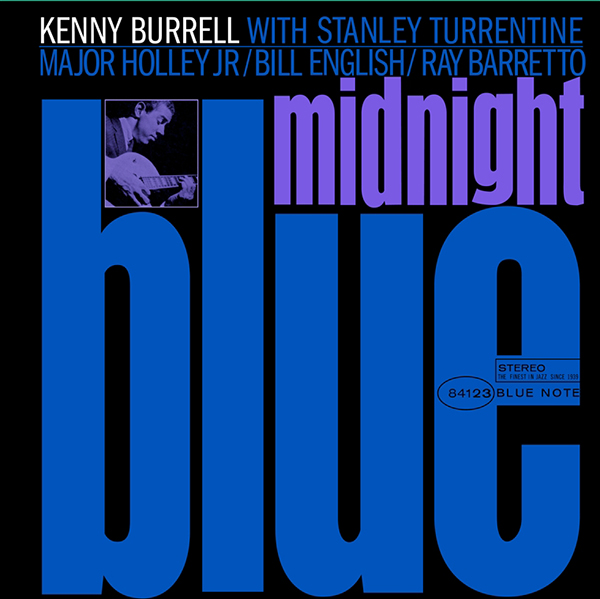
Kenny Burrell “Midnight Blue”
Cueing up “Chitlins con Carne” from Kenny Burrell’s Midnight Blue album gave similar results with the opening acoustic bass sounding massive, solid, and tight without a hint of bloat and the conga drum flourishes had both great detail and weight to their sound. Keep in mind that all this lower register goodness did not overshadow the great job my old but still beloved Bamberg monitors were doing with the rest of the music. The blend thanks to the Anthem electronics and ARC room correction was seamless but we are focusing here on the subwoofer’s performance with the AudioControl amps, and they were certainly up to the task of keeping pace with the high-quality performance of the Anthem electronics.
Secrets Sponsor
Switching setups to my Benchmark electronics and Revel F228Be speakers also proved to be an enjoyable but less perfect experience with adding the two subwoofers. Again, AudioControl provided helpful advice to properly set the amplifier’s input sensitivity to best match my Benchmark preamp. With the Revels running full range off my Benchmark amplifier and the summed mono balanced output of the HPA4 preamp split with a Y-adapter and sent to each sub, the trick was in finding the right Low Pass settings for the sub amps to blend with the natural in-room roll of the Revels. I had determined this to be 50 Hz. Unfortunately, the RS1000 amps would not allow a Low Pass filter setting below 80 Hz. This setting resulted in an upper bass that sounded a little on the tubby side. Lowering the amplifier volume helped but at the cost of low-end impact though. The subs still sounded great but, in the end, the suboptimal blend between speakers and subs was an issue. Talking to AudioControl about this, they mentioned that they are intending to add lower Low Pass filter settings in a future firmware update. It may even be available by the time you read this. If the firmware update arrives before I need to send the amps back, I will update the review accordingly. My sense after speaking with the engineers at the company about this amplifier is that they are willing to adapt features and capabilities of the RS1000, where possible, to appeal to the most users possible. That is a reassuring thing that doesn’t happen as much as it should these days.
If you need a specialized external amplifier to power your subwoofer installation, the AUDIOCONTROL RS1000 should be high on your list to audition.
- Powerful, light, and flexible amplifier.
- Network control and configuration are as complete as I’ve encountered.
- Made my DIY subwoofers sound fantastic.
- Great build quality and domestic support.
- Whoever writes their user manuals has a great sense of humor.
- Choice of High Pass filters to be active on the XLR outputs.
- Lower settings enabled for the Low Pass filter and choice of slopes (coming in a firmware update).
The AudioControl RS1000 has but a singular purpose, that is to drive your passive subwoofer installation to its ultimate potential. The amplifier itself is robust and had more power than I could reasonably use. It has a flexibility and configurability, through its network interface, that is complete and second to none. AudioControl’s Pacific Northwest build quality and service support are also top shelf. But above all else, the two amps made my twin DIY subwoofers sound better than they ever have before. Yes, they are, strictly speaking, designed more for the custom install market and therefore priced higher than some other professional high-power amps that some DIY builders use with their subs. Yet many of those amps come with tradeoffs like fan noise or limited control and connectivity options, where the RS1000 is silent and comes with a plethora of connection, control, and configuration choices. I had a great time putting these amps through their paces and I think they are certainly worth a look and listen if you are in the market for an external subwoofer amplifier. Recommended.


